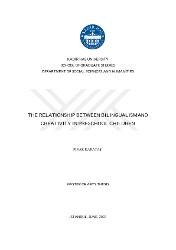| dc.description.abstract | Creativity is producing novel ideas and combining unrelated concepts to generate an original product (Guilford, 1967). Association between bilingualism and creativity can differ depending on the types of creativity (e.g., verbal and figural creativity). Earlier research agrees on a positive relationship between bilingualism and figural creativity; however, there are some discrepancies in the relationship between bilingualism and verbal creativity. Some suggest that bilingual individuals have poorer achievement on verbal creativity tasks; others discuss that bilingual individuals who have high L2 proficiency (second language proficiency) have better performance on verbal creativity tasks. Another aspect of creativity research examines the relationship between executive functions and creativity. Research findings vary on the association between verbal and figural creativity and three core executive functions. Moreover, studies show that bilingualism and executive functions are related. The present study intends to investigate the relationship between bilingualism and creativity taking into account the associations with the executive functions in preschool children. Fifty-six preschool children aged 4-6 (Mage= 65 months) participated in the study. Story Completion Task, Verbal Fluency Task, and Test of Creative Imaginary Abilities were administered to children to measure verbal and figural creativity. Children completed inhibitory control, cognitive flexibility, working memory tasks, and language measures. The results suggest that verbal creativity and L2 proficiency are positively related. However, there was no significant association between Verbal Fluency Task and L2 proficiency. Figural creativity was positively related to bilingualism, and highly L2 proficient participants showed better performance on the Test of Creative Imaginary Abilities. Moreover, there was no significant relationship between cognitive flexibility and inhibitory control with any creativity task. On the other hand, working memory capacity was positively related to figural creativity performance while it was negatively associated with verbal creativity. Overall, L2 proficiency was positively related to verbal and figural creativity; on the other hand, working memory was positively associated with figural creativity. | en_US |
















